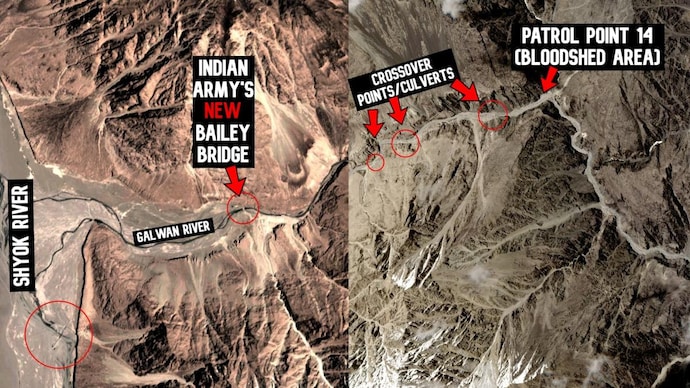After bloodshed, Army engineers toil 72 hours to finish Galwan bridge that triggered China
Just hours after the brutal June 15 night brawl in the Galwan Valley, Indian Army's combat engineers received orders to leave no stone unturned to accelerate and finish the construction of a bridge over the Galwan River.

While the dead were still being counted on Tuesday morning, the Indian Army went full speed ahead to finish a piece of military infrastructure that had originally contributed to tensions in the Galwan Valley in Ladakh.
India Today TV has learnt that just hours after the brutal June 15 night brawl in the Galwan Valley, that left 20 Indian Army personnel and an unspecified number of Chinese Army personnel dead, Indian Army's combat engineers received orders to leave no stone unturned to accelerate and finish the construction of a bridge over the Galwan River.
That 60-meter bridge, a crucial piece of connectivity that provides Indian military units sharper access to points near the Line of Actual Control (LAC), was finished on Thursday afternoon, with the Army testing it with vehicles over a period of two hours. At the local level, the bridge has come to be symbolic of hardened defiance despite extreme provocation and premediated violence by the Chinese side.
On Tuesday morning, just as the death toll in the brawl a few kilometres upstream to the east was becoming clear, the Army's Karu-based mountain division sent word to the Army Engineers unit asking them to speed up with the bridge construction without any delay.
The 'bailey bridge' is a type of portable bridge comprised of metal trusses for the rapid transit of military vehicles of all kinds, including infantry combat vehicles.
Local commanders felt the need to issue the specific instruction since the enormity of Monday night's events could have potentially thrown things out of gear on the ground, given the bridge construction was taking place no more than a couple of kilometers from where the bloodletting took place.
The instructions were precise: use whatever resources necessary to finish the bridge as early as possible.
Given the tensions in the area following the brawl, infantry companies in the area were asked to specifically provide cover as the engineers finished the bridge. Work continued on Tuesday night and Wednesday night in freezing temperatures.
Indian Army divisional commander Major General Abhijit Bapat, who arrived at Patrol Point 14 on the morning of June 16 for talks with his Chinese counterpart, received a specific brief on progress of the bridge. The focus of the talks remained on disengaging and de-escalation after the bloodshed, though the instructions to the Army engineers was clear: work was not to stop at any cost.
The bridge, one of two chief Indian infrastructural trigger points for Chinese mobilisations in the Galwan Valley is now complete and fully operational.
The other, bigger infrastructural Indian thorn in China's proverbial flesh, is the DSDBO road on the east bank of the Shyok River into which the Galwan flows. The bridge and road combined provide India with markedly better access, not just to the Galwan Valley, but the crucial northern sectors.
India Today TV's Ashraf Wani reported earlier this week that the Border Roads Organisation, which works in tandem with Army engineers in these areas, was speeding up construction over the larger Shyok River not far from the Galwan-Shyok confluence.
ALSO READ | Violent India-China clash at LAC: What really happened that night
ALSO READ | Exclusive: First images from Galwan show Chinese build-up intact after Ladakh carnage, India holding ground
ALSO READ | Bloodiest India-China clash in 40 years leaves 20 jawans dead, Chinese casualties in Ladakh's Galwan Valley
ALSO WATCH | Exclusive details of Ladakh face-off: Clubs wrapped in barbed wire, stones used to attack Indian soldiers
